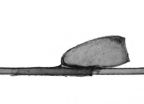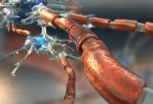(Press-News.org) Organ transplant patients routinely receive drugs that stop their immune systems from attacking newly implanted hearts, livers, kidneys or lungs, which the body sees as foreign.
But new research at Washington University School of Medicine in St. Louis suggests that broadly dampening the immune response, long considered crucial to transplant success, may encourage lung transplant rejection.
In a surprising discovery, the researchers found that newly transplanted lungs in mice were more likely to be rejected if key immune cells were missing, a situation that simulates what happens when patients take immunosuppressive drugs.
These long-lived memory T cells are primed to "remember" pathogens that infiltrate the body and quickly trigger an immune response during subsequent encounters. In heart, liver and kidney transplants, knocking down memory T cells with immunosuppressive drugs helps to ensure that the immune system recognizes a new organ as the body's own.
But not so in lung transplants, according to the new research published online Feb. 24 in the Journal of Clinical Investigation.
"In mice, memory T cells are critical for a lung transplant to have a good outcome," said co-corresponding author Daniel Kreisel, MD, PhD, a Washington University lung transplant surgeon at Barnes-Jewish Hospital. "A lot of transplant recipients receive drugs that indiscriminately deplete many different T cells. But in lung transplants, this strategy may contribute to organ rejection."
In light of the new findings, the researchers think current immune-suppression strategies should be re-evaluated in lung transplantation.
"Most immunosuppressive drugs were adopted for use in lung transplants based on their results in other solid organ transplants, without an appreciation that the lung is different," Kreisel said.
The research also may help explain, in part, why the success of lung transplants in people lags far behind other solid organ transplants.
Five years after lung transplantation, fewer than half of the transplanted lungs are still functioning, according to the U.S. Organ Procurement and Transplantation Network. This compares with five-year organ survival rates of about 70 percent for heart, kidney and liver transplants.
The poorer outcomes after lung transplantation are related largely to higher rejection rates, the researchers said. About 1,800 lung transplants are performed each year in the United States.
"The high failure rate of lung transplants is a major problem," said co-corresponding author Alexander Krupnick, MD, a Washington University lung transplant surgeon at Barnes-Jewish Hospital. "Lungs are unique. Unlike other organs, they are continually exposed to bacteria, viruses and everything else in the environment, and we think this increases the risk of chronic rejection and the eventual failure of the organ."
Memory T cells regularly patrol the lungs, where they distinguish harmless challenges like cat dander or tree pollen from more serious insults like respiratory viruses or pathogenic bacteria. Without these cells, the immune system recognizes a newly transplanted lung as harmful and mounts an attack that eventually can lead to rejection of the organ.
As part of the study, the researchers performed lung transplants in mice. When memory T cells were absent in these mice, the newly transplanted lungs underwent rejection. The researchers found evidence of severe inflammation in the lungs, an indicator that the immune system had instigated an aggressive attack against the foreign organ.
However, when the scientists infused memory T cells into the lung recipients, they could reduce inflammation and prevent rejection. Further, they defined the molecular pathway by which memory T cells naturally dampen the body's response to lung transplants. Rather than attacking the lungs, memory T cells unleash a cascade of signaling molecules that encourage the immune system to see the transplanted lung as the body's own.
Based on their findings, the researchers want to find ways to selectively target immunosuppression in lung transplants, to encourage memory T cells to thrive while eliminating other T cells that harm transplanted lungs.
"We really need to develop immune suppression strategies just for lung transplants that boost the ability of memory T cells to do their job," Krupnick said. "This may give newly transplanted lungs a much better chance of surviving long after the transplant is over."
INFORMATION:
This work was supported by the American Association for Thoracic Surgery, NIH (K08CA131097, R01HL113931, K08HL083983, R01HL094601, R01HL113436, HHSN268201000046C); the Thoracic Surgery Foundation for Research and Education; the American Thoracic Society Lungevity Foundation Research Grant; the American Cancer Society; the Foundation for Barnes-Jewish Hospital; and the International Society for Heart and Lung Transplantation.
Krupnick AS, Lin X, Li W, Higashikubo R, Zinselmeyer BH, Hartzler H, Toth K, Ritter JH, Berezin MY, Wang ST, Miller MJ, Gelman AE, Kreisel D. Central memory CD8+T lymphocytes mediate lung allograft acceptance. The Journal of Clinical Investigation, Feb. 24, 2014.
Washington University School of Medicine's 2,100 employed and volunteer faculty physicians also are the medical staff of Barnes-Jewish and St. Louis Children's hospitals. The School of Medicine is one of the leading medical research, teaching and patient-care institutions in the nation, currently ranked sixth in the nation by U.S. News & World Report. Through its affiliations with Barnes-Jewish and St. Louis Children's hospitals, the School of Medicine is linked to BJC HealthCare.
New clues found to preventing lung transplant rejection
2014-02-25
ELSE PRESS RELEASES FROM THIS DATE:
Ordinary conditioner removes head lice eggs as effectively as special products
2014-02-25
Eggs from head lice, also called nits, are incredibly difficult to remove. Female lice lay eggs directly onto strands of hair, and they cement them in place with a glue-like substance, making them hard to get rid of. In fact, the eggs are glued down so strongly that they will stay in place even after hair has been treated with pediculicides -- substances used to kill lice.
Some shampoos and conditioners that contain chemicals or special oils are marketed as nit-removal products. However, new research just published in the Journal of Medical Entomology shows that ordinary ...
Research links risky behaviors of gambling and sex
2014-02-25
February 25, 2014 -- Late adolescence is a period when many youth become involved in high-risk behaviors with adverse consequences. Researchers at the Mailman School of Public Health with colleagues at Johns Hopkins University studied the degree to which two such behaviors, adolescent sexual behaviors and gambling, affected African American youth in nine primary schools in Baltimore, MD. In data collected from a cohort study, they assessed whether certain adolescent sexual behaviors linked with unintended consequences such as adolescent pregnancy and sexually transmitted ...
Dartmouth-led research shows temperature, not snowfall, driving tropical glacier size
2014-02-25
Temperature, not snowfall, has been driving the fluctuating size of Peru's Quelccaya Ice Cap, whose dramatic shrinkage in recent decades has made it a symbol for global climate change, a Dartmouth-led study shows.
The findings support many scientists' suspicions that tropical glaciers are rapidly shrinking because of a warming climate, and will help scientists to better understand the natural variability of past and modern climate and to refine models that predict tropical glaciers' response to future climate change.
The study appears in the journal Geology. A PDF ...
PFC exposure may spark metabolic changes in overweight children
2014-02-25
Washington, DC—Overweight children who were exposed to higher levels of perfluorinated chemicals tended to show early signs of developing the metabolic syndrome, according to a new study published in The Endocrine Society's Journal of Clinical Endocrinology & Metabolism.
The term metabolic syndrome describes a cluster of risk factors that increase the chances of developing heart disease, stroke and diabetes. The study is the first to find changing metabolic markers in children were associated with exposure to perfluorinated chemicals (PFCs), common industrial chemicals ...
Vitamin D deficiency may compromise immune function
2014-02-25
Washington, DC—Older individuals who are vitamin D deficient also tend to have compromised immune function, according to new research accepted for publication in the Endocrine Society's Journal of Clinical Endocrinology & Metabolism (JCEM).
Vitamin D plays an important role in helping the body absorb calcium needed for healthy bones. The skin naturally produces vitamin D when it is exposed to sunlight. People also obtain smaller amounts of the vitamin through foods, such as milk fortified with vitamin D. More than 1 billion people worldwide are estimated to have deficient ...
Tissue repair drug helps heal diabetic foot ulcers
2014-02-25
Washington, DC—Patients were twice as likely to have a diabetic foot ulcer heal within eight weeks when they were treated with a tissue repair drug versus a placebo, according to new research accepted for publication in the Endocrine Society's Journal of Clinical Endocrinology & Metabolism (JCEM).
Foot ulcers are a common complication from diabetes than can lead to hospitalization and lower limb amputation. In 2006, about 65,700 non-traumatic lower-limb amputations were performed in people with diabetes, according to the Centers for Disease Control and Prevention. Up ...
New study presents evidence that blood pressure should be measured in both arms
2014-02-25
Philadelphia, PA, February 25, 2014 – As heart disease continues to be one of the leading causes of death in the United States, practitioners and patients alike are looking for ways to cut risk factors and identify new clues to assist with early detection. New research published in the March issue of The American Journal of Medicine suggests that there is an association between a difference in interarm systolic blood pressure and a significant increased risk for future cardiovascular events, leading researchers to recommend expanded clinical use of interarm blood pressure ...
Ecotoxicity: All clear for silver nanoparticles?
2014-02-25
It has long been known that, in the form of free ions, silver particles can be highly toxic to aquatic organisms. Yet to this day, there is a lack of detailed knowledge about the doses required to trigger a response and how the organisms deal with this kind of stress. To learn more about the cellular processes that occur in the cells, scientists from the Aquatic Research Institute, Eawag, subjected algae to a range of silver concentrations.
In the past, silver mostly found its way into the environment in the vicinity of silver mines or via wastewater emanating from the ...
Georgia Tech project ensures 'what you see is what you send'
2014-02-25
Imagine a user who intends to send $2 to a friend through PayPal. Embedded malware in the user's laptop, however, converts the $2 transaction into a $2,000 transfer to the account of the malware author instead.
Researchers at Georgia Tech have created a prototype software, Gyrus, that takes extra steps to prevent malware from sending spam emails and instant messages, and blocking unauthorized commands such as money transfers.
Current protection programs might recognize the original user's intent to send email, transfer money or engage in other transactions, but cannot ...
Unhealthy attachments
2014-02-25
(Santa Barbara, Calif.) — Using the surface forces apparatus and an atomic force microscope, researchers at UC Santa Barbara have taken a molecular approach to myelin membrane interactions, leading to insights into demyelinating diseases, such as multiple sclerosis. Their research is published in the Proceedings of the National Academy of the Sciences.
For a healthy nervous system, axons — the long projections of our nerve cells that run throughout our bodies — must be properly insulated. Much like conventional power cords need electrical insulators around the conducting ...



